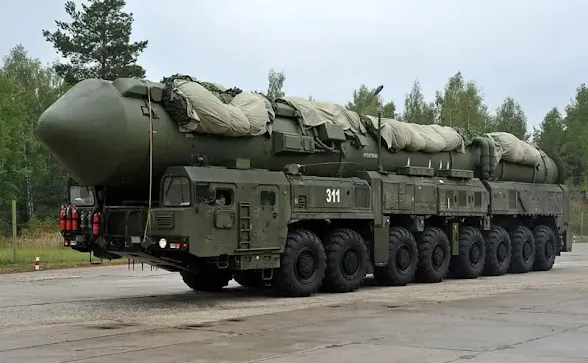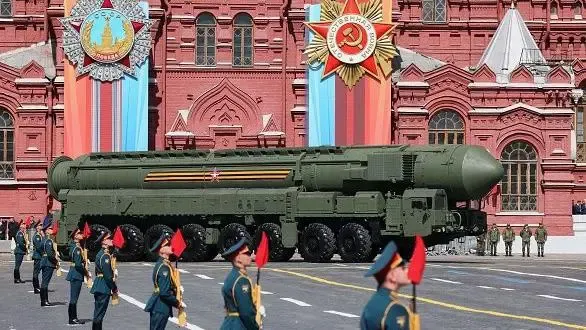'Explosion still three hours after attack': Russia's mysterious 'Oryzhnik' missile that has become a mystery
The Oryzhnik Missile: A New Chapter In Military Technology
Robert Grenell
Chris Partridge
BBC News
Pros
1. Intriguing and Engaging:
The mention of "mysterious" and "explosion still three hours after attack" sparks curiosity, drawing readers in.
2. Keyword-Rich:
Includes strong keywords like "Russia," "Oryzhnik missile," and "mystery," which are likely to rank well in searches related to defense or geopolitics.
3. Timeliness:
If this is a current or trending topic, the title capitalizes on its relevance to attract more clicks.
4. Emphasizes Unique Feature:
The phrase "explosion still three hours after attack" highlights the unusual characteristic of the missile, making it stand out.
Cons:
1. Length:
The title is somewhat long, which might be truncated in search results, reducing visibility.
2. Lack of Specifics:
The term "mysterious" is vague and might not provide enough information for users looking for concrete details.
3. No Benefit Mentioned:
It doesn’t indicate why the reader should care—missing a "what’s in it for me" aspect.
4. Repetitive:
The phrase "has become a mystery" is redundant when "mysterious" is already in the title.
Improved Suggestion:
"Russia's 'Oryzhnik' Missile:
- Why Its Explosions Occur Hours After Impact.
- More concise and informative while maintaining intrigue.
- Focuses on the "why," which can engage readers searching for explanations.
A Russian airstrike on the Ukrainian city of Dnipro on Thursday was a bit different in intensity from previous attacks, with witnesses reporting that explosions could be heard for about three hours after the strike.
The missile used in the strike was so powerful that Ukrainian officials later said it had all the characteristics of an intercontinental ballistic missile.
However, Western officials quickly dismissed the Ukrainian claim, saying an intercontinental ballistic missile strike would have immediately triggered a nuclear alert in the United States.
Hours after the attack, Russian President Vladimir Putin said in a speech that Russia had used a new “medium-range” missile in its attack on Ukraine, codenamed “Oryshnik.” “Oryshnik” is the Russian word for hazel.
President Putin said the weapon reached its target at a speed of three kilometers per second and that “there is currently no way to stop it.”
He said the Russian attack targeted a military-industrial complex in Dnipro. He called the missile strike a “successful” test because its “goal was achieved.”
Speaking to defense officials a day after his speech, President Putin added that tests of the missile would continue “including in a combat situation.”
Putin has described the weapon, but no one knows what it is.
Ukrainian intelligence officials believe it is a variant of the intercontinental “Cedar” missile, which took 15 minutes to reach its target in Ukraine.
The Ukrainian city of Dnipro is more than 1,000 kilometers from where the missile was launched. They say the missile was equipped with six warheads.
BBC Verify has examined the video of the airstrike and its findings are consistent with the Ukrainian authorities’ assessment.
The location of the Russian airstrike is an industrial area southeast of the city of Dnipro.
Why is the speed of a missile important?
If the missile’s specifications as described by President Putin are correct, the Oreshnik missile could be considered a hypersonic missile.
The speed of any missile is important because the faster it travels, the faster it will reach its target. If the missile reaches its target at lightning speed, the opposing military force will have less time to react.
A ballistic missile travels towards its target in a downward direction and then a downward direction. But when it is moving downward, its speed increases and it moves towards the target while defending itself.
This makes it a little more difficult for anti-missile systems to destroy it in the air.
However, finding ways to protect against these threats is nothing new for the military, but the higher the speed of the missile, the more difficult it will be to stop it.
That is why President Putin, while giving information about this missile, especially emphasized its speed.
According to an estimate, about 80 percent of the missiles fired by Russia have been intercepted by Ukraine so far.
However, the new missile fired by Russia may pose a problem for Ukraine due to its lightning speed.
What is the range of this new missile?
A Russian military expert told a pro-Russian newspaper that ‘Oryzhnik’ could possibly be a new missile that was developed in a highly secretive manner and could be a medium-range missile.
He says, “It is possible that it (Oryzhnik) is part of a new generation of Russian medium-range missiles with a range of 2,500 to 3,000 kilometers, or that this range can be increased from 3 to 5,000 kilometers, but it is not an intercontinental missile.”
That is, this missile has the ability to reach Europe, but not the United States.
He believes that the ‘Oryzhnik’ missile is a lower version of the ‘Yars-M complex’ intercontinental missile.
Earlier, there were reports that Russia was working on such new missiles.
Another military expert, Dmitry Kornov, told the Russian newspaper that the ‘Oryzhnik’ could be based on the short-range Iskander missile.
The Iskander has a larger engine and was tested in southern Russia last spring. Dmitry says it could be the same missile.
How successful is the Oreshnik?
Military expert Vladislav Shurygin told a Russian newspaper that the Oreshnik missile is capable of evading any modern missile defense system.
According to him, the Oreshnik missile is capable of destroying any protected bunker without using a nuclear warhead.
Another Russian analyst, Igor Korochenko, told the TASS news agency that the Oreshnik missile is capable of carrying multiple warheads and “all these warheads are launched at the same time”, which is why the missile is a very successful weapon.
Justin Crump, CEO of a company called Subline, told BBC Verify that the missile could challenge Ukraine’s defense system.
According to him, “Russia’s short-range missiles remain a threat to Ukraine in this conflict.”
“Lightning speed and more modern weapons will increase the severity of these threats to Ukraine.”
Related topics
#Nuclear_weapons #Ukraine #Ukraine_Russia_conflict #Russia #War











No comments: